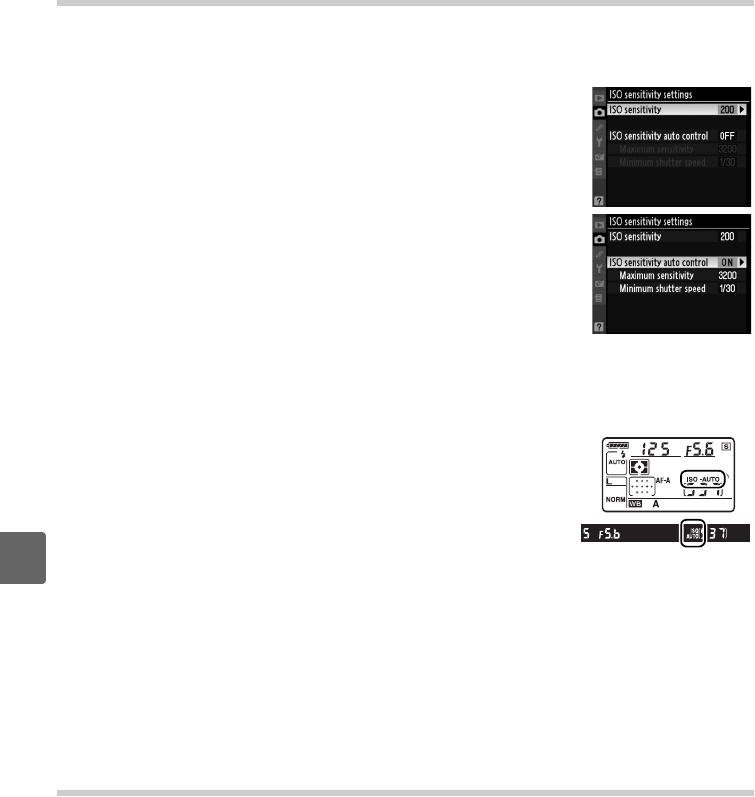
166
i
ISO Sensitivity Settings
Adjust ISO sensitivity (pg. 74).
This option is available in all modes.
❚❚ ISO Sensitivity Auto Control (P, S, and A Modes Only)
If Off (the default setting) is chosen for ISO sensitivity auto
control, ISO sensitivity will remain fixed at the value selected by
the user (see page 74).
When On is chosen, ISO sensitivity will
automatically be adjusted if optimal exposure can not be
achieved at the value selected by the user (flash level is
adjusted appropriately).
The maximum value for auto ISO
sensitivity can be selected using the Maximum sensitivity
option in the ISO sensitivity auto control menu (choose lower
values to prevent noise; the minimum value for auto ISO
sensitivity is automatically set to ISO 200).
In exposure modes
P and A, sensitivity will only be adjusted if underexposure would
result at the shutter speed selected for Minimum shutter
speed.
Slower shutter speeds will be used only if optimum exposure can not be
achieved at the ISO sensitivity value selected for Maximum sensitivity.
When On is selected, the control panel and viewfinder show
ISO-AUTO.
These indictors blink when sensitivity is altered from
the value selected by the user.
A
Auto ISO Sensitivity Control
Noise is more likely at higher sensitivities.
Use the High ISO NR option in the shooting menu
to reduce noise (see page 168).
Foreground subjects may be underexposed in photos taken
with the flash at slow shutter speeds, in daylight, or against a bright background.
Choose a
flash mode other than slow sync or select exposure mode A or M and choose a larger aperture.
Note that when the flash is used, the camera uses the shutter speed selected for Custom
Setting e1 (Flash shutter speed, pg. 185) in place of the value selected for Minimum shutter
speed.
Active D-Lighting
This option can be used to prevent loss of detail in highlights and shadows (pg. 119).
The default setting is Auto.
This option is available in P, S, A, and M modes only.


















